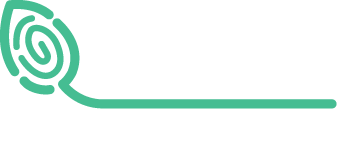
Taylor Home & Fashions Ltd Knows Sustainability Goes Beyond Just the Fiber
Cleaning up the denim supply chain means more than just better fibers.
For Taylor Home & Fashions Ltd., cleaning up the denim supply chain was about using low impact fibers, but then putting them through low impact processing to end up with denim that has lower impact from raw material to rack.
It’s a thought process more supply chain players have adopted, which has made each step in the manufacturing process advance toward greater sustainability. That’s why Taylor Home & Fashions developed a process for coloration with a far less harmful effect.
Carved in Blue caught up with the home furnishings and textiles company to understand how it colors yarns and fabrics, where it’s headed with sustainability and what’s in store for the sector going forward.
Carved in Blue: Can you tell us a little about what sets your coloration process apart from others?
Taylor Home & Fashions: Our GiDelave™ Yarns and Fabrics are colored using a direct color application method we call color diffusion. This process eliminates the need for a dye bath in the coloring of cellulosic fibers, resulting in using 98 percent less water than fiber reactive or indigo dyeing. In addition to water saved in coloration, there are significant savings in finishing the garment as well, as the “washed down” appearance is created at the yarn stage eliminating the need for additional washing.
In addition to using less water it allows us to reduce the chemicals used to color the cellulose fibers. Through efficient application of color, we reduce the chemical consumption in the process by more than 75 percent. Also, we are able to reduce the number of chemicals used from as many as 35 in fiber reactive dyeing to just five total. These five chemicals are all ZDHC compliant and easy to trace.
We use so little water in our process it allows us have zero waste water discharge and as a result no effluent released back into the environment.
Carved in Blue: Why did you decide to use this method?
Taylor Home & Fashions: In the areas of cellulosic fiber usage the only choice one has had in sustainability is to choose more sustainable fibers like TENCEL™ Lyocell or Modal branded fibers. While these are excellent choices, we wanted to affect the processing of these fibers and make the processing much more sustainable as well. Currently the dyeing and finishing of textiles contributes over 20 percent of the industrial water pollution globally. With our GiDelave™ product we eliminate this pollution almost entirely. The only waste water we have is when we clean our machines to change colors.
Carved in Blue: What made you decide to use TENCEL™ Lyocell and Modal?
Taylor Home & Fashions: We chose to partner with Lenzing to help us achieve our “No Compromise Promise.” We want sustainability without sacrifice and using Lenzing fibers helps us achieve this goal. While sustainability is a great reason to use our GiDelave™ products, beauty and performance are what lead the way. By using Lenzing fibers we are able to achieve the beauty, depth of color, and hand feel of products that usually require much wet processing and thus consuming great quantities of fresh water.
In addition, in using our coloration process we are able to enhance performance characteristic and solve some of the production issues that limit the use of indigo fabrics. GiDelave™ yarns have enhanced tensile strength, colorfastness, and crocking as compared with indigo dyeing, while maintaining the look and feel of traditional indigo fabrics. With the enhanced performance in crocking and color fastness we are able to create indigo dyed looks in sweaters and knits allowing companies which focus on denim to expand their product offering.
Carved in Blue: What other markets do you see benefitting from this coloration process? 
Taylor Home & Fashions: We see benefits to all fashion and home markets that desire a washed down look without the washdown process. The beautiful texture that you see in our GiDelave™ fabrics is created at our color application step and this eliminates the need to wash down products creating another level of sustainability and cost reduction. With the enhancement of performance characteristics of GiDelave™ textiles and yarns also allows “denim” to move into new markets like bedding, home products, sweaters, and fine knits while maintaining the look of traditional indigo.
Carved in Blue: What does sustainability mean to you?
Anthony Lau, CEO Taylor Home & Fashions: I was an accomplice polluting the environment by using conventional dyeing method since graduating from textile school 40 years ago. I saw polluted streams and rivers around our mills; I witnessed smog allover China. I became aware of the increasing number of cancer cases, I believed were caused by pollution. I have had a close friend pass away from lung cancer most likely from being exposed to the smog in Beijing; I heard about “cancer villages” due to improper handling dyeing effluent and other hazardous textile chemicals. As, I learned the impact of global warming from Copenhagen Climate Summit (2009) and further from Paris Climate Summit. I decided to make a change proactively.
Carved in Blue: What’s your hope for the future of the denim sector?
Anthony: The future of the textile industry inclusive of the denim sector relies on the industry finding sustainable solutions for our consumers. I hope that in the future, sustainable solutions are how we do business and not an attribute we add to a product.
Carved in Blue: What does Carved in Blue mean to you?
Taylor Home & Fashions: For us “Carved in Blue” combines our passion for using modern science to create sustainable products while providing our “No Compromise Promise” to outfit you in your favorite denim while protecting our precious environment.






